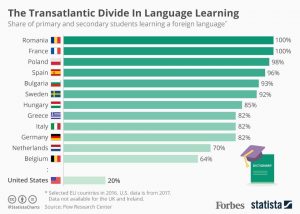Anexo 1: Learning how to learn, Curation & Intercultural Exchange
Learning Objectives for the Preliminary Unit
This information is in Spanish in the main section of the OER. Use this English version to make sure that you understand how to use the various resources and affordances, like LinguaFolio Online, Hypothes.is, curations on rampages, teletandem sessions, Boomalang, etc.
Learning Objectives for this Preliminary Unit
What you’ll learn and be able to do by the end of this module
- Indicate what you currently CAN-DO in Spanish and plot it on LinguaFolio Online.
- Project what realistically you will be able to do (future CAN-DO) by the end of the semester.
- Plot out what you need to learn & do to move from what you can-do right now to what you will be able to do by the end of term.
- Create your learning team & assemble your learning materials to achieve your learning goals & objectives.
- Discover what digital curation is, create your rampages.us account, and try your first curation.
- Review what you already know and what you will need to (re)learn before starting Unit 1.
I. Learning how to learn
In this section of the course, you will learn what LinguaFolio is and how to use it to articulate and achieve your learning goals in Spanish. LinguaFolio has been shown in research to provide valuable language learning and tracking tools. Ultimately, it can give you what you need to become an autonomous learner, setting and reaching ever-increasing language and intercultural proficiency. Importantly, VCU Languages has acquired the online version (LinguaFolio Online or LFO) that will allow you to chart your progress inside and outside class, on a computer or mobile device.
These are the steps you will take to learn about and begin using LinguaFolio Online in this unit (not required in SPAN 202).
- Learn about LinguaFolio and LFO.
- Consider how you will set your own learning goals for this semester: https://lfonetwork.uoregon.edu/wp-content/uploads/sites/5/2016/03/Learner-Goal-Setting-Handout.pdf
- Create your LFO account and connect it to this course: (use this code: ***). Connect LFO to SPAN 202-***.
- Fill out your LinguaFolio with your Can-Do statements and input any artifacts that you may have retained from earlier coursework or experiential learning. Add extra-curricular learning and artifacts from previous classes and experiences that add dimensions to your Can-Do statements (eg., study abroad, Spanish-speaking roommate, work in a Spanish or Latin American-themed restaurant, internship in an international company, etc.).
- Review the Can-Do statements for Unit 1 to try to shore up any gaps in your current knowledge and skills (what you think you should have learned by now, but just don’t feel as strong as you think you should).
To go further
If you’d like to try out an example of a proficiency-based test, VCU uses the Avant STAMP 4S Assessment Test to measure the progress of Foreign Language majors. Our School of World Studies majors take the Avant as their final exam in Spanish 300, and then again a year or two later at the end of the the WLRD 490 Capstone Course before they graduate. The Avant STAMP 4S Assessment Test is protected by Copyright © 2021 Avant Assessment, LLC. All rights reserved.
II. Curation 
In this section, you learn about curations and curating. Curating is a 21st century skill. Given the flood of information online, we all need to know how jump in and out of the flow in such as way that we don’t get swept away, rather that we manage to find, manipulate and create information in both professional and private settings. Learning how to manage information in languages other than English is a highly marketable skill. Curating is a suite of activities whereby the curator seeks information about a given topic, learns about the topic from multiple readings, selects some of the most salient sites and sounds, and assembles a narrative around these artifacts, sharing it with others so that they learn from you. In this section, the class will be learning about curation in general but also learn learning about it in Spanish, noting the ‘Spanish way» to curate by studying examples from the Spanish speaking world.
These are the steps to take to learn how to curate effectively in Spanish (and in English!) :
- Create your rampages.us site if you don’t have one already. Join the Spanish curations rampage: https://rampages.us/spanish2atvcu).Read one or more curations on curation, learning the vocabulary and discourse surrounding this field in Spanish.
- Work through a module on curations here: * http://fren425frenchmedia.pbworks.com/w/page/50964301/Ce%20que%20c’est%20que%20la%20curation
- Learn about curating for this course here*: https://rampages.us/french2atvcu/?page_id=1946
- Try out curation by seeking at least 10 sites, at least half of which are from a Spanish-speaking country, that will help you fill in one of the gaps you noted in Section I.1 as you worked on your LFO. Write up your summaries of at least 6 (at least 3 in Spanish), how each selected site promotes your learning, and why/how in particular these sites will help you improve your Spanish. Post your curation on rampages under the category SPAN202f2018*, with tags: curation0, yourname.
- Learn how to peer edit so you can help and be helped in class on your curation narrative. See here 🙁https://coerll.utexas.edu/methods/modules/writing/04/editing.php & https://coerll.utexas.edu/methods/pdf/wr/writing-feedback-codes.pdf )* replace with Spanish-language códigos or add códigos
- Revise your curation in rampages based on peer editing the professor’s feedback.
- Evaluate the class curations on the rampages site:https://rampages.us/french2atvcu/?page_id=1946.*
A Good Definition of Curation (¡en español!)
Mr Rohit Bhargava for the content (www.webbythoughts.com/content-curation-tools-resource/), and welenia studios for the image (www.facebook.com/weleniastudios/
Below is a podcast on curation that explains it quite nicely.
If listening to Spanish is still a bit hard for you, click the «CC» button for captions in Spanish: that can help a lot.
Vocabulary is important:
- contenido = content
- la veille* = aggregation
- los sitios / las páginas / las páginas web / los sitios web = sites, websites, webpages
- una trampa = a trap
- un enlace = a link
- aburrir(se) = to bore, to be bored
- las redes sociales = social networks
- compartir = to share
Shouldn’t be hard : Facebook, blogs, Tweeter, le buzz*, le challenge*, fotos, información, etc.
III. Teletandem & other online intercultural exchange forms
Teletandem language learning, a.k.a, online intercultural exchange (OIE) or telecollaboration is a 21st century learning affordance for second language acquisition. It works by connecting two people wanting to learn the other’s native language. So, for example, a student from the United States who wants to learn Spanish will partner with someone from Spain or Latin America or even Equatorial Guinea, an African country whose official language is also Spanish! In their online meeting (via Skype, Zoom, Google Hangouts, Adobe Connect), of 30 minutes, they discuss a given topic or two for 15 minutes in each language: Spanish and English. In some instances, the topics are the same; in others, each person has a specific one. The exchange experience may be organized by the learners’ schools or people may seek out a site like the Mixxer, where one signs up by language and level for exchanges with learners of the native language. Another version, although not really ‘tandem’, is a paid service (like TalkAbroad, iTalki, etc.) in which the language learner works with an online ‘tutor’ who has been hired to work on given topics with the learner entirely in the target language, Spanish in our case.
For tandem learning to work well and for you to get the most from the experience, there are a few communicative functions you’ll need to master as well as some preparation before each session. First of all, take note of which country* your partner comes from and learn a bit about the country, the inhabitants, and some of the cultural products, practices and perspectives. In more general terms, you should review how people in Spanish speaking countries greet each other, for example (Spain, Mexico, Argentina).
 So why do this? It may seem to some people that English is enough. So many people worldwide are learning it, so why learn their languages? The first is that those people who are monolingual, speak only English for example, are limited in their ability to think, act and communicate. They are most certainly not ready to participate broadly in the global 21st century. The second is that a bilingual person has two ways to see a situation, figure out a problem, choose a response. The third is that languages surround us, not only globally, but in our own neighborhoods, here is the USA!
So why do this? It may seem to some people that English is enough. So many people worldwide are learning it, so why learn their languages? The first is that those people who are monolingual, speak only English for example, are limited in their ability to think, act and communicate. They are most certainly not ready to participate broadly in the global 21st century. The second is that a bilingual person has two ways to see a situation, figure out a problem, choose a response. The third is that languages surround us, not only globally, but in our own neighborhoods, here is the USA!


Sugerencias/Erratas